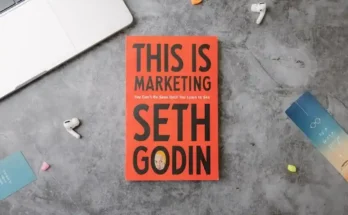The Ever-Changing Landscape of Marketing:
Marketing, once confined to newspaper ads and radio jingles, has undergone a revolutionary transformation. What was once a linear, straightforward process is now a multifaceted ecosystem where creativity, data, technology, and human psychology collide. In today’s digital-first world, marketing is no longer just about selling products—it’s about building connections, telling stories, and creating experiences that resonate deeply with consumers.
The evolution of marketing is not just a shift in tools or tactics; it’s a reimagining of purpose. It demands a deep understanding of audiences, an intuitive grasp of trends, and a touch of artistic brilliance to craft messages that don’t just reach people—but move them.
The Core of All Marketing:
-
Stories Matter More Than Ever
In an age where consumers are constantly bombarded with information, traditional advertising can easily become noise. What cuts through the clutter is storytelling. People remember stories, not slogans. They crave authenticity, relatability, and emotion—something numbers alone can’t deliver.
Storytelling in marketing isn’t about fiction. It’s about finding the emotional thread that ties a brand to its audience. Whether it’s a tale of overcoming adversity, a story of innovation, or a narrative rooted in community values, stories humanize brands. They turn logos into identities, and transactions into relationships.
-
From Narratives to Experiences
Modern storytelling goes beyond words. Visual content, interactive media, branded podcasts, immersive social campaigns—all of these are chapters in a larger narrative. Think of Apple’s minimalist aesthetic or Nike’s “Just Do It” ethos. These aren’t just marketing strategies; they are stories lived out by millions.
By creating multi-channel narratives, brands can turn customers into characters—active participants in the story they help write with every click, share, or purchase.
The Unsung Hero of Creative Marketing:
-
Numbers That Inspire Ideas
While storytelling ignites the emotional core, data fuels the strategic engine. Some may view data as cold or purely analytical, but in the right hands, it becomes a canvas for creativity. Knowing what your audience wants, when they want it, and where they consume content can guide campaigns that feel intuitive rather than intrusive.
Data isn’t about spying on users—it’s about serving them better. With tools like Google Analytics, heatmaps, and AI-driven insights, marketers can understand customer behavior with unprecedented precision. This leads to personalized experiences, targeted messages, and ultimately, deeper connections.
-
Predicting Trends and Staying Ahead
Marketers who leverage data effectively aren’t just reacting—they’re predicting. Using trends analysis, sentiment tracking, and A/B testing, they stay one step ahead, crafting content that feels fresh, relevant, and ahead of the curve.
For example, a fashion brand can use real-time search data to predict which colors or styles are gaining traction, launching collections that align perfectly with consumer desires. This blend of intuition and information is the future of impactful marketing.
The Human Behind the Brand:
-
Marketing with Empathy
In a world marked by economic uncertainty, social change, and global crises, empathy has emerged as a powerful marketing force. Today’s consumers aren’t just buying products—they’re buying into values. They want to know that the brands they support stand for something.
Marketing with empathy means listening before speaking. It means campaigns that address real problems, celebrate diversity, and promote mental well-being. Brands that speak to the heart build loyalty that no discount can buy.
During the COVID-19 pandemic, brands like Dove and Coca-Cola shifted their messaging to focus on unity, health, and appreciation for essential workers. These weren’t just PR moves—they were emotional connections forged during a shared global experience.
-
Authenticity Over Perfection
In the era of influencers and social media, polished perfection is giving way to raw authenticity. Consumers are smart—they can spot a staged ad from a mile away. What they truly crave is honesty. Brands that admit mistakes, share behind-the-scenes moments, and engage in real conversations earn trust, not just likes.
Take Wendy’s Twitter strategy as an example—playful, unfiltered, and engaging. It’s not corporate. It’s human. And in the modern marketing playbook, being human is the greatest asset of all.
Channels That Connect:
-
Choosing the Right Playground
With platforms ranging from Instagram to LinkedIn, TikTok to podcasts, the modern marketer must be a digital nomad, fluent in multiple languages and mediums. But success doesn’t come from being everywhere—it comes from being everywhere that matters.
Each platform has its own culture. Instagram favors visuals. Twitter demands wit. LinkedIn leans into thought leadership. TikTok celebrates creativity and spontaneity. Understanding the psychology of each platform allows marketers to tailor content that fits the medium like a glove.
-
Integration Is Everything
While platforms differ, the message must be unified. A brand’s voice, values, and visuals need to align across all touchpoints. This is where integrated marketing shines—a seamless strategy that ties email campaigns, social media, SEO, and offline efforts into one cohesive journey.
Imagine a user sees a YouTube ad, receives a personalized email, follows a brand on Instagram, and visits a physical store—all with consistent messaging. That’s not a coincidence. That’s strategy.
Innovation at the Heart of Marketing:
-
The Rise of Experiential Campaigns
Marketing is no longer confined to screens. Brands are creating real-world experiences that blur the lines between art, entertainment, and commerce. Pop-up shops, virtual reality, and branded installations allow consumers to live the brand, not just watch it.
One iconic example is IKEA’s immersive showroom experiences or Nike’s “House of Innovation” store where digital and physical merge. These aren’t just stores—they’re stages for storytelling, spaces where marketing becomes memory.
-
Embracing AI and Automation
Artificial intelligence is rapidly changing the marketing game—from chatbots and personalized recommendations to automated ad bidding and content creation. But AI doesn’t replace human creativity—it enhances it.
Imagine a campaign where AI analyzes audience behavior and automatically serves content most likely to engage. The result is smarter marketing, not lazier marketing. The future is collaboration: machine precision meets human imagination.
Conclusion:
At its core, marketing reflects us—our dreams, fears, desires, and beliefs. As society evolves, so must our approach to connecting with one another. The best marketers aren’t just selling—they’re understanding, empathizing, adapting, and creating.
To market well in the 21st century is to walk a tightrope between science and art, between automation and empathy, between the metrics that matter and the moments that move us. It’s a thrilling, ever-shifting dance—and for those who embrace its rhythm, the possibilities are endless.




